E-flite UMX ASK-21 BNF User Manual
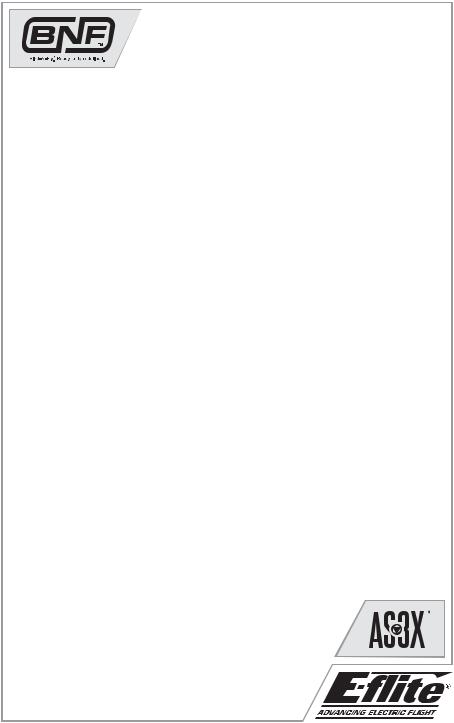
UMX™ ASK-21
Instruction Manual Bedienungsanleitung Manuel d’utilisation Manuale di Istruzioni
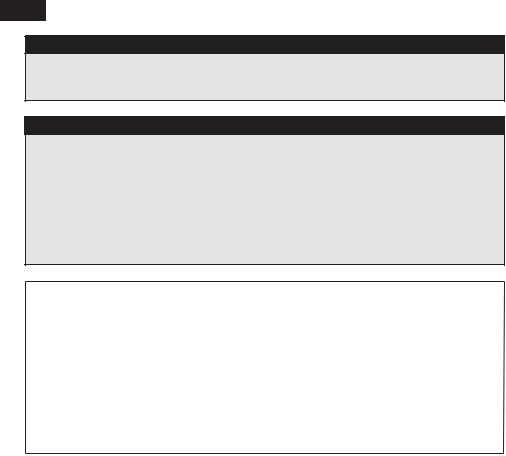
EN
NOTICE
All instructions, warranties and other collateral documents are subject to change at the sole discretion of Horizon Hobby, Inc. For up-to-date product literature, visit www.horizonhobby.com and click on the support tab for this product.
Meaning of Special Language:
The following terms are used throughout the product literature to indicate various levels of potential harm when operating this product:
NOTICE: Procedures, which if not properly followed, create a possibility of physical property damage AND little or no possibility of injury.
CAUTION: Procedures, which if not properly followed, create the probability of physical property damage AND a possibility of serious injury.
WARNING: Procedures, which if not properly followed, create the probability of property damage, collateral damage, and serious injury OR create a high probability of superfi cial injury.
 WARNING: Read the ENTIRE instruction manual to become familiar with the features of the product before operating. Failure to operate the product correctly can result in damage to the product, personal property and cause serious injury.
WARNING: Read the ENTIRE instruction manual to become familiar with the features of the product before operating. Failure to operate the product correctly can result in damage to the product, personal property and cause serious injury.
This is a sophisticated hobby product. It must be operated with caution and common sense and requires some basic mechanical ability. Failure to operate this product in a safe and responsible manner could result in injury or damage to the product or other property. This product is not intended for use by children without direct adult supervision. Do not attempt disassembly, use with incompatible components or augment product in any way without the approval of Horizon Hobby, Inc. This manual contains instructions for safety, operation and maintenance. It is essential to read and follow all the instructions and warnings in the manual, prior to assembly, setup or use, in order to operate correctly and avoid damage or serious injury.
Age Recommendation: Not for children under 14 years. This is not a toy.
2
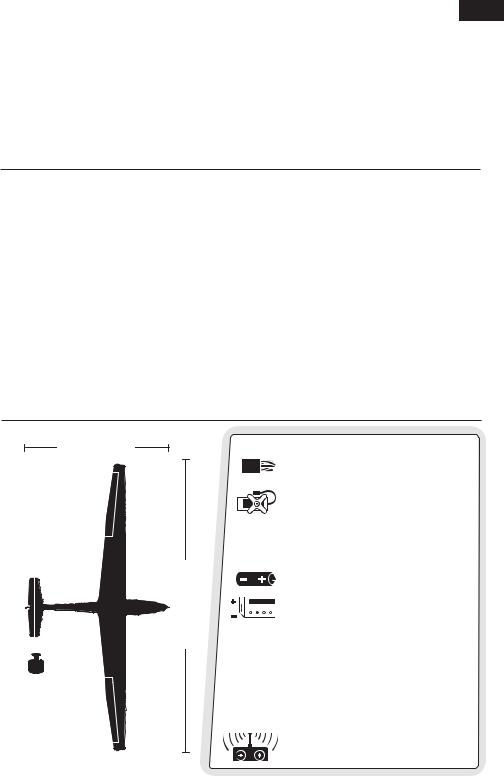
EN
Thank you for purchasing the E-fl ite® UMX™ ASK-21 scale RC sailplane. A fi rst of its kind in its size class is a fully functional 4-channel aircraft capable of loops and rolls, as well as traditional thermal and slope
soaring. Lightweight and sleek, your new UMX ASK-21 is equipped with AS3X® System technology specially tuned for the many variations of fl ight conditions you’ll encounter, so that you get the smooth experience similar to that of fl ying a giant-scale sailplane. And like the giant-scale sailplanes, this UMX ASK-21 is
tow hook equipped making it aerotow capable when paired with the powerful E-fl ite UMX Carbon Cub SS (EFLU1180). Another strong benefi t of the AS3X® is its outstanding ability to stabilize the glider while on a tow line or Hi-start and help prevent common issues, such as heading loss, which can make smooth fl ight diffi cult. Please be sure to read through this manual carefully so that you can successfully enjoy all the benefi ts this outstanding ultra-micro model has to offer.
Table of Contents |
|
Prefl ight Checklist................................................. |
4 |
Charging Warnings................................................ |
4 |
Charging the Battery............................................. |
5 |
Wing Installation ................................................... |
6 |
Transmitter and Receiver Binding ......................... |
7 |
Installing the Flight Battery .................................. |
7 |
Initializing AS3X .................................................... |
8 |
Control Centering.................................................. |
8 |
Settings for Control Horns..................................... |
8 |
Control Direction Test............................................ |
9 |
Dual Rates............................................................ |
9 |
Adjusting Center of Gravity (CG) ............................ |
9 |
Hi-Start Hook Installation .................................... |
10 |
Hi-Start Launch .................................................. |
10 |
Towing................................................................ |
12 |
Tips for Towing ................................................... |
13 |
Tow Release Installation...................................... |
13 |
Flying Tips and Repairs ....................................... |
14 |
Additional Safety Precautions and Warnings........ |
15 |
Troubleshooting Guide ........................................ |
15 |
Troubleshooting Guide (Continued)...................... |
16 |
Limited Warranty ................................................ |
17 |
Warranty and Service Information ....................... |
18 |
Compliance Information for the European Union.. |
18 |
Replacement Parts ............................................. |
70 |
Optional Parts and Accessories .......................... |
71 |
Parts Contact Information ................................... |
71 |
17 in (432mm)
33.9 in (860mm)
2.56 oz
(72.5 g)
Installed
Receiver: DSM2/DSMX 6Ch UM AS3X
Receiver ESC (EFLU1264)
Servos: (1) 2.3-Gram Performance Linear Long Throw Servo (SPMSA2030L)
(2) 2.3-Gram Linear Long Throw Offset Servo (SPMSA2030LO)
(2) (SPMSA2030L) on the board
Included
Battery: 150mAh 1S 25C Li-Po
(EFLB1501S25)
Battery Charger: 1S 3.7V Li-Po (EFLC1000)
Additional Components:
4 AA Batteries
Tow Line (EFLU1257)
Tow Plate (EFLU1255) Hi-Start and Stake (EFLU1258) Hi-Start Hook and Screw (EFLU1255)
Needed to Complete
Recommended Transmitter:
Spektrum™ Full range DSM2®/DSMX® with dual-rates (DX4e and up)
To register your product online, go to www.e-fl iterc.com
3
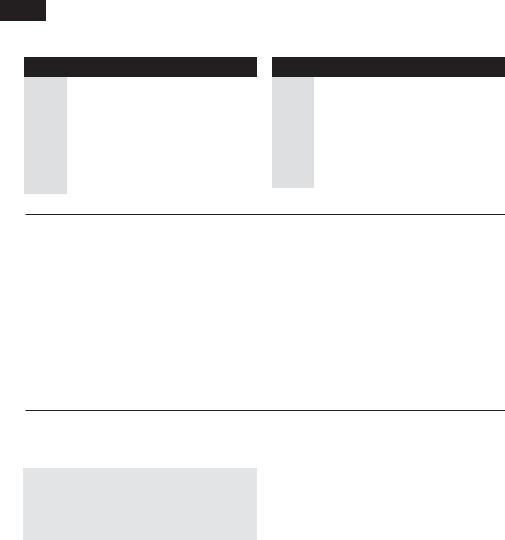
EN
Preflight Checklist
|
|
|
|
|
|
|
|
|
|
|
|
|
|
|
1. |
Charge fl ight battery. |
|
|
6. |
Set dual rates. |
|
2. |
Install fl ight battery in aircraft |
|
|
|
|
|
|
|
7. |
Adjust center of gravity. |
||
|
|
(once it has been fully charged). |
|
|
||
|
|
|
|
|
|
|
|
|
|
|
|
|
|
|
3. |
Bind aircraft to transmitter. |
|
|
8. |
Perform a radio system Range Check. |
|
|
|
|
|
|
|
|
4. |
Make sure linkages move freely. |
|
|
|
|
|
|
|
9. |
Find a safe and open area. |
||
|
|
|
|
|
||
|
5. |
Perform Control Direction Test with |
|
|
|
|
|
|
|
10. Plan fl ight for fl ying fi eld conditions. |
|||
|
|
transmitter. |
|
|
||
|
|
|
|
|
|
|
|
|
|
|
|
|
|
AS3X Stabilization Delivers
Breakthrough Performance
Horizon Hobby has always made RC sport, scale and unique aircraft with the kind of performance experts appreciate. Now the exclusive Artificial Stability – 3 aXis (AS3X) system helps take performance expectations in ultra micro aircraft a quantum leap higher.
Based on the successful use of MEMS sensor technology within the AS3X Stabilization System essential to Blade® ultra micro flybarless
helicopters, the specifically tuned AS3X System for airplanes helps invisibly correct for turbulence, torque and tip stalls when encountered.
Furthermore, the outstanding control agility delivers an ultra smooth, locked-in feel that obeys your every command with performance that’s natural feeling. It’s so gratifying, in fact, that it’s as though you’re the RC pilot of an expertly tuned, giant-scale model.
AS3X will change the way you’ll want to fly now and in the future. To see what we mean, go to www.E-fliteRC.com/AS3X.
Charging Warnings
The included battery charger (EFLC1000) has been designed to safely charge the Li-Po battery.
 CAUTION: All instructions and warnings must be followed exactly. Mishandling of Li-Po batteries can result in a fi re, personal injury, and/or property damage.
CAUTION: All instructions and warnings must be followed exactly. Mishandling of Li-Po batteries can result in a fi re, personal injury, and/or property damage.
•By handling, charging or using the included Li-Po battery, you assume all risks associated with lithium batteries.
•If at any time the battery begins to balloon or swell, discontinue use immediately. If charging or discharging, discontinue and disconnect. Continuing to use, charge or discharge a battery that is ballooning or swelling can result in fi re.
•Always store the battery at room temperature in a dry area for best results.
•Always transport or temporarily store the battery in a temperature range of 40–120º F (5-48º C). Do not store battery or aircraft in a car or direct sunlight. If stored in a hot car, the battery can be damaged or even catch fi re.
•Always charge batteries away from fl ammable materials.
•Always inspect the battery before charging and never charge dead or damaged batteries.
•Always disconnect the battery after charging, and let the charger cool between charges.
•Always constantly monitor the temperature of the battery pack while charging.
•ONLY USE A CHARGER SPECIFICALLY DESIGNED TO CHARGE LI-PO BATTERIES. Failure to charge the battery with a compatible charger may cause fi re resulting in personal injury and/or property damage
•Never discharge Li-Po cells to below 3V under load.
•Never cover warning labels with hook and loop strips.
•Never leave charging batteries unattended.
•Never charge batteries outside recommended levels.
•Never attempt to dismantle or alter the charger.
•Never allow minors to charge battery packs.
•Never charge batteries in extremely hot or cold places (recommended between 40–120° F or 5-48° C) or place in direct sunlight.
4
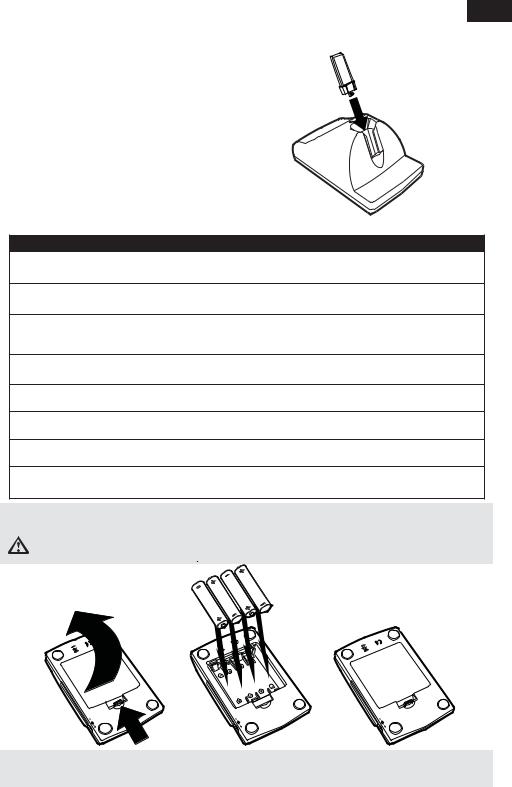
EN
Charging the Battery
Your UMX ASK-21 comes with a 1S 3.7V Li-Po Battery Charger and a 1S Li-Po battery. You should only charge your 1S Li-Po battery with a Li-Po charger, such as the included charger or the E-fl ite® Celectra™ 4-port charger (EFLC1004).
Refer to the battery warnings. It is recommended to charge the battery pack while you are inspecting the aircraft. The fl ight battery will be required to confi rm proper aircraft operation in future steps.
Please visit www.horizonhobby.com for optional battery adapters.
The Battery Charging Process
1.Charge only batteries that are cool to the touch and are not damaged. Look at the battery to make sure it is not damaged e.g., swollen, bent, broken or punctured.
2.Remove the cover on the bottom of the charger and install four of the included AA batteries, noting proper polarity. Replace the cover after the AA batteries are installed.
3.Slide the battery into the slot on the charger. The end cap of the battery is specifi cally designed to allow the battery to fi t into the slot one way (usually with the label on the battery facing outward) to prevent reverse polarity connection. However, check for proper alignment and polarity before proceeding to the next step.
4.Gently press the battery and its connector into the charge jack/connector located at the bottom of the slot in the charger.
5.When you make the connection successfully, the LED on the charger turns solid red, indicating charging has begun.
6.Charging a fully discharged (not over-discharged) 150mAh battery takes approximately 30–40 minutes. As the battery nears full charge, the LED begins to blink.
7.When the battery is fully charged, the LED blinks approximately every 20 seconds or goes out entirely. If the LED stays on when the battery is removed, the AA batteries in the charger are low.
8.Always unplug the battery from the charger immediately upon completion of charging.
 CAUTION: Overcharging a battery can cause a fi re.
CAUTION: Overcharging a battery can cause a fi re.
 CAUTION: Only use a charger specifi cally designed to charge a Li-Po battery. Failure to do so could result in fi re causing injury or property damage.
CAUTION: Only use a charger specifi cally designed to charge a Li-Po battery. Failure to do so could result in fi re causing injury or property damage.
CAUTION: Never exceed the recommended charge rate.
 CAUTION: Only use an E-fl ite 6V power supply (EFLC1005) with this charger. DO NOT use a 12V power supply or property damage and injury could occur.
CAUTION: Only use an E-fl ite 6V power supply (EFLC1005) with this charger. DO NOT use a 12V power supply or property damage and injury could occur.
5
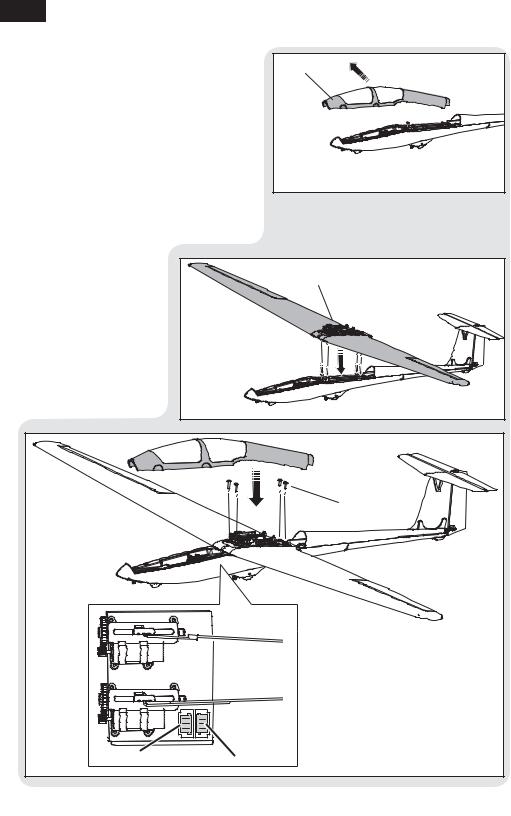
EN
Wing Installation |
|
|
1. |
Lift the front of the canopy (A) and pull it |
A |
|
forward off the fuselage. |
|
|
|
|
2. |
Align the 4 holes in the wing (B) with the 4 |
|
|
screw posts in the fuselage. |
|
3. |
Secure the wing to the fuselage by fully |
|
|
tightening the 4 included screws (C). |
|
4. |
Connect the aileron leads to the aileron |
|
|
ports on the receiver. Left aileron servo needs |
|
|
to be connected to the front port (D), right |
|
|
aileron servo needs connected to the rear port |
|
|
(E). The servos leads are labeled “L” and “R” |
|
|
for your convenience. |
|
5.Be sure to check proper control directions before your first flight. You should not need to reverse any control surfaces.
6.Reinstall the canopy on the fuselage.
Disassemble in reverse order. |
B |
|
C |
|
Top View |
D |
E |
6 |
|

EN
Transmitter and Receiver Binding
Binding is the process of programming the receiver of the control unit to recognize the GUID (Globally Unique Identifi er) code of a single specifi c transmitter. You need to ‘bind’ your chosen Spektrum DSM2/DSMX technology equipped aircraft transmitter to the receiver for proper operation.
Any JR® or Spektrum DSM2/DSMX transmitter can bind to the AS3X DSM® receiver. For best fl ight performance of the UMX ASK-21, it is recommended that you use a transmitter with dual rates. Please visit www.bindnfl y.com for a complete list of compatible transmitters.
NOTICE: When using a Futaba® transmitter with a Spektrum DSM module, reversing the throttle channel is required.
Binding Procedure
1.Refer to your transmitter’s unique instructions for binding to a receiver.
2.Make sure the fl ight battery is disconnected from the aircraft.
3.Power off the transmitter.
4.Connect the fl ight battery in the aircraft. The receiver LED will begin to fl ash rapidly (typically after 5 seconds).
5.Make sure the transmitter controls are at neutral and the throttle and throttle trim are in the low position.
6.Put your transmitter into bind mode. Refer to your transmitter’s manual for binding button or
switch instructions.
7.After 5 to 10 seconds, the receiver status LED will become solid, indicating that the receiver is bound to the transmitter. If the LED does not turn solid, refer to the Troubleshooting Guide at the back of the manual.
For subsequent fl ights, power on the transmitter for 5 seconds before connecting the fl ight battery.
Installing the Flight Battery
1.Lift the front of the canopy and pull the canopy forward off the fuselage.
2.Install the flight battery onto the hook and loop strip (A) in the battery compartment as far forward as possible.
3.Refer to Initializing AS3X instructions for connecting the battery to the receiver.
4.Install the canopy on the fuselage
Do not operate the ASK-21 for longer than 25 minutes on fully charged battery.
NOTICE: Always ensure that the battery is secured in the aircraft using hook and loop tape.
 CAUTION: Always disconnect the Li-Po battery from the aircraft receiver when not fl ying to avoid over-discharging the battery. Batteries discharged to a voltage lower than the lowest approved voltage may become damaged, resulting in loss of performance and potential fi re when batteries are charged.
CAUTION: Always disconnect the Li-Po battery from the aircraft receiver when not fl ying to avoid over-discharging the battery. Batteries discharged to a voltage lower than the lowest approved voltage may become damaged, resulting in loss of performance and potential fi re when batteries are charged.
A |
7
